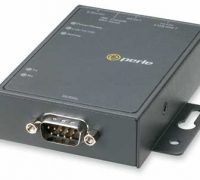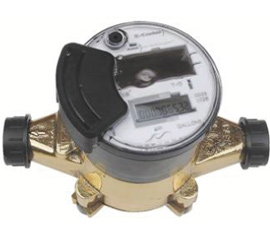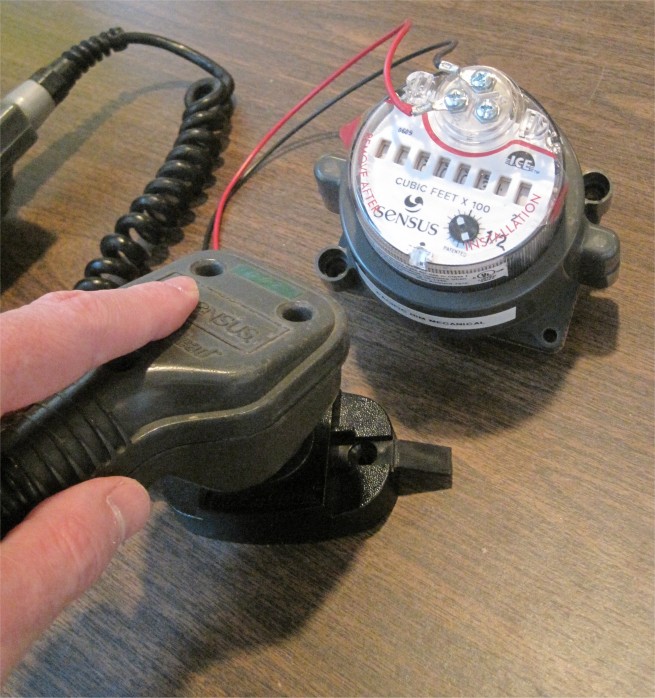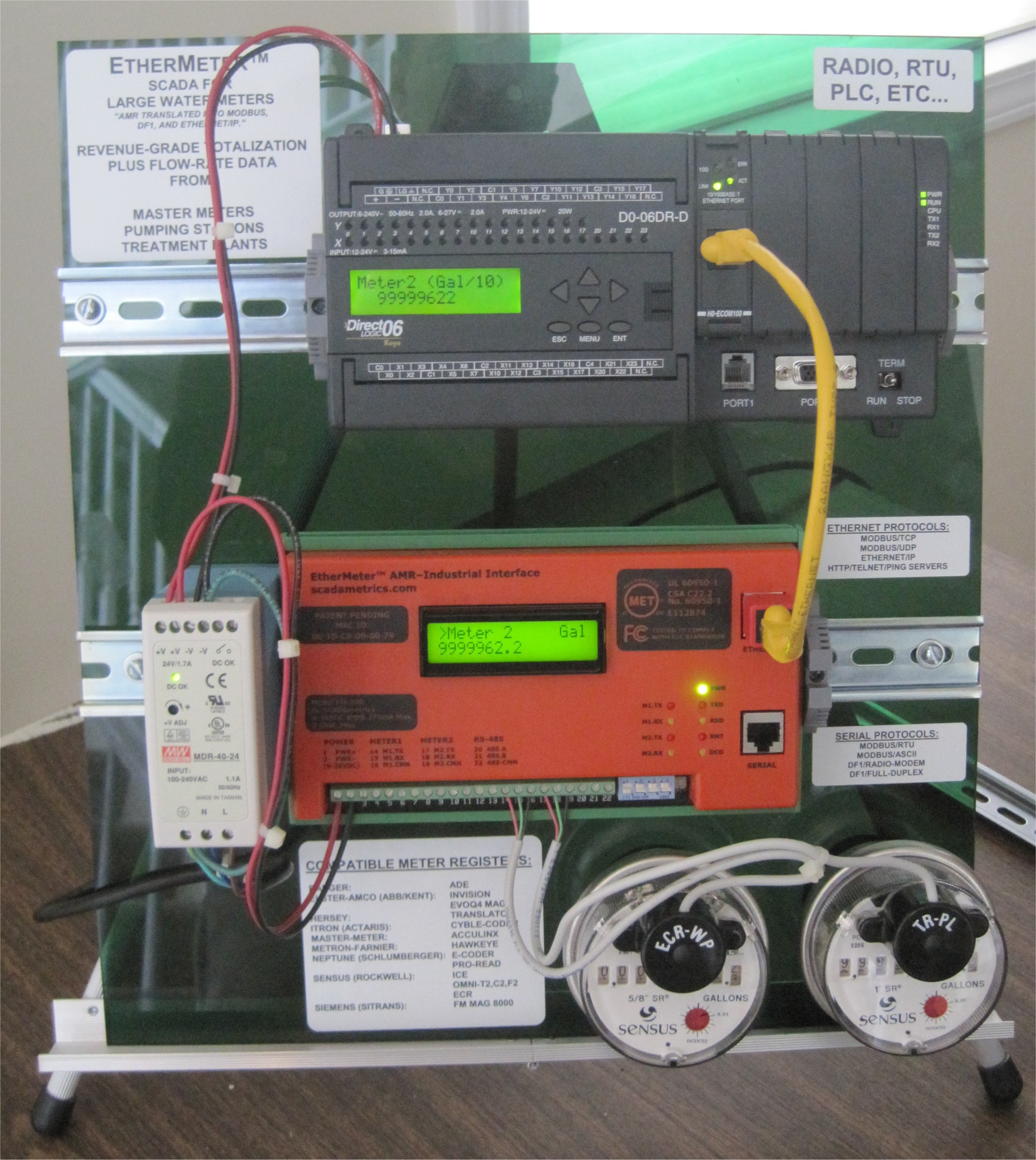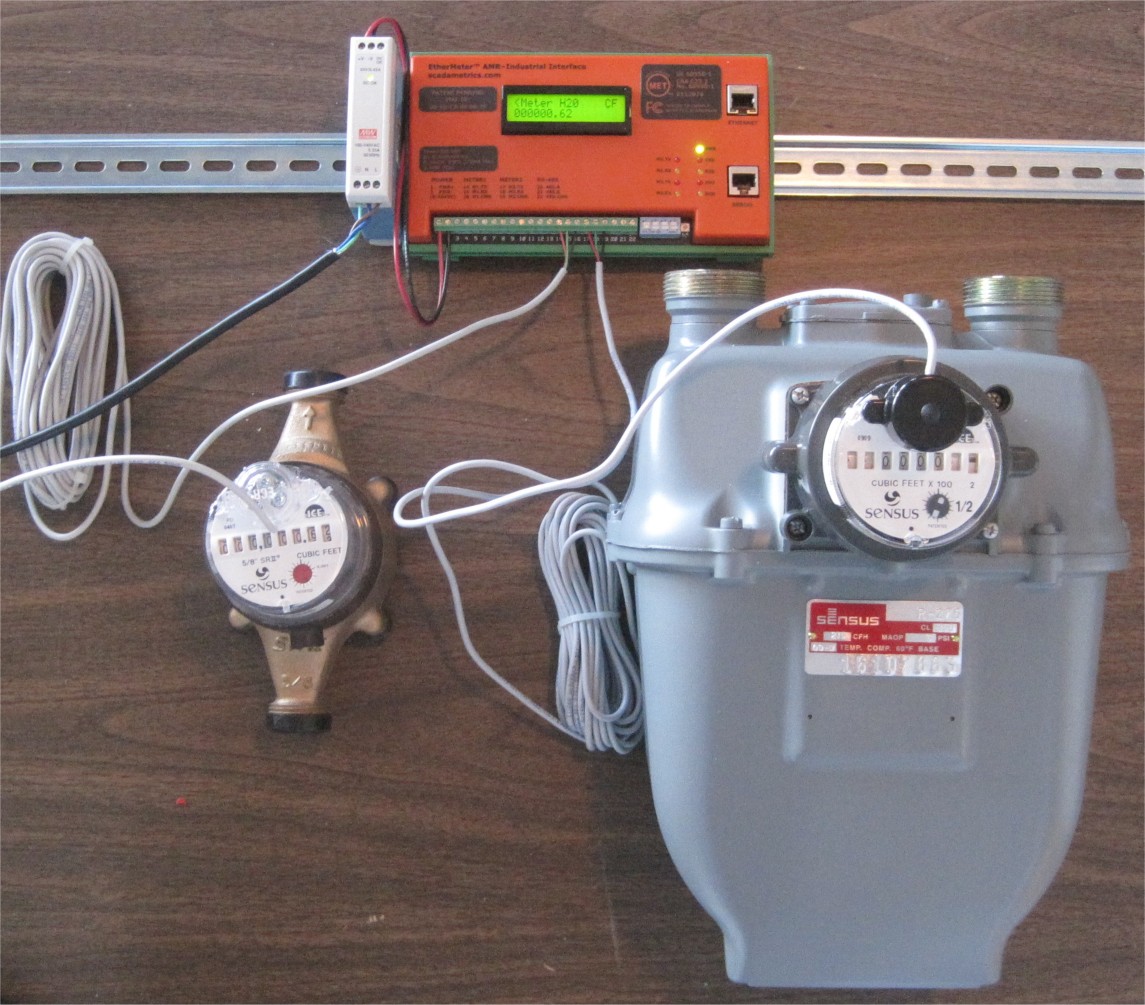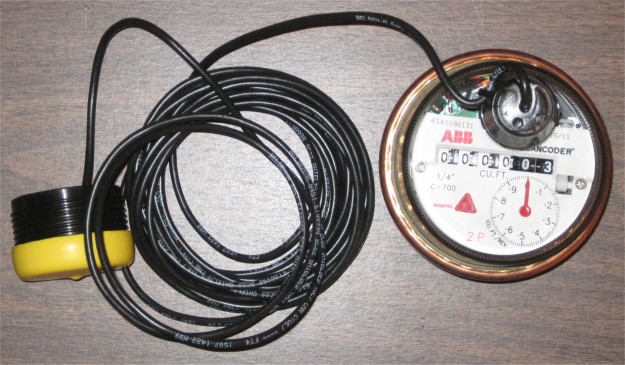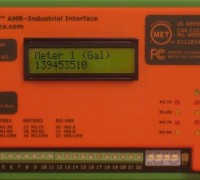(2021 Edit: This article only pertains to use of our legacy Bell-202 OEM modem module with a PC. Today, the more efficient approach is to simply use our new Model SB.202 Smart Bell 202 Modem, which does not require a device server to handle radio timings.) In 2012, SCADAmetrics introduced the B202 — an Industrial Bell … Read More →
In 2012, SCADAmetrics introduced the B202 — an Industrial Bell 202 Modem designed for Radio Telemetry Applications. The B202 is designed to provide external, non-proprietary data modulation/demodulation for a wide range of popular narrowband analog telemetry radios, including models from Ritron, Tecnet/Maxon, GE/MDS, RF Neulink, and Calamp. We recently performed extensive laboratory and field validation … Read More →
SCADAmetrics is pleased to introduce a new PDF to our Documentation Center: The EtherMeter Pre-Start Checklist: CLICK HERE TO VIEW This document, which contains a 11-point checklist, was developed to help EtherMeter Project Users with pre-planning before purchase and deployment. If you have any recommendations for improvement to this document, please let us know. Your … Read More →
Many industrial flow metering applications feature the use of Insertion-type paddle wheel sensors. (See Figure 1 below.) Internally, these meters feature a paddle wheel that rotates in the near vicinity of a magnetic pickup, similar in principle to a string pickup in an electric guitar. The signal output from this type of meter is a low-level sine wave, … Read More →
In 2011, SCADAmetrics introduced the Radio-Read Filter — the device that enables two AMR devices to read a single water meter simultaneously. This instrument serves a vitally important function in situations where both the water seller and buyer are interested in tracking water consumption. One example might be a utility-owned water meter in a commercial building. In such a case, the water … Read More →
Many petroleum industry flow metering applications feature the use of magnetic-pickup-type turbine meters. (See Figure 1 below.) Internally, these meters feature a steel turbine that rotates past a magnetic pickup, similar in principle to a string pickup in an electric guitar. The signal output from this type of meter is a low-level sine wave, whose frequency and amplitude both increase as … Read More →
In recent months, we’ve been receiving regular requests from non-industrial-controls clients who wish to build an AMR System around the EtherMeter. Examples include owners and managers of commercial properties, such as apartment buildings and strip malls. In most cases, this category of client works in the commercial sub-metering realm, and therefore does not have prior … Read More →
The Boone IA Firmware is a customized EtherMeter firmware that was created to provide a simple solution to a customer who desired zoned leak detection. This EtherMeter version, which is now offered as an option at our eStore, signals an alarm annunciator when higher-than-normal flows are detected from a connected flow meter. In this project, the … Read More →
In this article, we introduce a novel method of quantifying pump station energy efficiency. For an automobile, everyone is familiar with Miles-Per-Gallon or MPG. Today, we are going to introduce an equivalent measure of pump station efficiency that every water utility Telemetry/SCADA system should include: GPK. Automobile Efficiency… Have you ever calculated the average gas mileage for your automobile? … Read More →
SCADAmetrics is pleased to report that the EtherMeter has been verified compatible with the new high-resolution, absolute-encoder water meter registers offered by Badger Meter (Milwaukee, WI). Badger’s new register family — the HR-E (High Resolution Encoder) — offers vastly improved resolution over its legacy absolute encoder, the 6-Digit ADE. The High Resolution Encoder is offered in two variations: … Read More →
When totalizing the total accumulated flow through a non-absolute-encoder flow meter, it is generally preferable to interface with a pulse-per-volume signal (eg. 1 pulse per gallon). However, certain flow meters only offer a 4-20mA signal that is proportional to rate-of-flow. Examples include certain Parshall Flume-Type Wastewater Flow Meters, Differential-Pressure Flow Meters, WH Power Meters, and many … Read More →
In instances where the pulse input signal is derived from a mechanical contact (eg reed-relay pulse signals from many gas meters), it may be necessary to install a “de-bounce” filter on the pulse-input wires to remove false pulses caused by bouncing and/or arcing contacts. The capacitor value is selected based upon the expected pulse duration. … Read More →
In order to set up an EtherMeter, you will need a computer equipped with a serial port, terminal emulation software (eg HyperTerminal), and a SCADAmetrics Serial/Setup Cable. A convenient way to add a serial port to a notebook or desktop computer is with a USB-Serial Adapter. In my experience, the make/model that provides the best combination of performance … Read More →
In addition to its ability to read most encoder-type flow meters, the EtherMeter also features pulse-input support. The following Application Note details the procedures for connecting a Sensus High-Speed Pickup (Pulse) Register to an EtherMeter; and it also describes an example of modified Setup Menu parameters for the High-Speed Pickup: https://scadametrics.com/PDF/App_Note_014.pdf Note that the Sensus … Read More →
The EtherMeter contains an RS485 port for Modbus/RTU and DF1 communications in multi-drop applications. When using the RS485 port, the following EtherMeter terminals are used: 19 – RS485A (-) 20 – RS485B (+) 21 – Signal GND Reference (contains current-limiting resistor) In order to use RS485, attention should be given to the EtherMeter’s dip switch positions: Latest EtherMeter: … Read More →
The “E-Coder” is an excellent water meter register, manufactured by Neptune Technology Group, that features an all-digital LCD display activated and powered by an integral solar cell. The register as a whole does not contain a battery, and it is entirely powered by a combination of hydroelectric energy (water passing through the meter) and the solar cell. … Read More →
A new application note has been posted to the support page of scadametrics.com. The note documents the procedures for programming a Sensus “ICE” register (index) for maximum metering resolution and EtherMeter compatibility. Maximized resolution improves the connected SCADA system’s ability to monitor realtime flow-rate and totalization from both water and gas meters. While it is preferable (and simpler) for the customer to … Read More →
A new application note has been published to scadametrics.com that details the steps required to connect an EtherMeter and a popular Koyo PLC using MODBUS/TCP. … Read More →
The EtherMeter can be used to enable a SCADA system to collect both water and gas meter totalization and instantaneous flow-rate — even simultaneously. An interesting application is the use of a single EtherMeter connected to an encoder-based water meter plus an encoder-based gas meter. In the example illustrated below, a Sensus SR-II water meter and a Sensus R-275 temperature-compensated … Read More →
At times, it’s necessary to splice a meter’s integral signal cable with an extension cable to increase the overall cable length. This article contains recommendations for both splice hardware and extension cable. … Read More →
The evoQ4 MagMeter by Elster-AMCO Water offers three (3) SCADA signal types: Elster Protocol, Sensus Protocol, and Pulse Output. The EtherMeter is capable of interfacing with each of these methods. … Read More →
The EtherMeter is compatible with the ScanCoder water meter register by Elster-AMCO Water (ABB-Kent). This article details the steps required to connect the two. … Read More →
A new white paper has been posted to scadametrics.com. In this paper, methods are described for connecting a combination of water and gas meters to an automation network. Because Itron/Actaris offers encoder-type signaling, in the form of the “Cyble-Coder” technology — in both their water and gas meters — the Itron/Actaris models are emphasized in this article. Click … Read More →
When connecting a Sensus Omni Meter (T2, C2, R2, or F2) to an EtherMeter, it is important to connect to the proper Omni cable. A potential point of confusion is that the Omni meter features two identical, integrated cables. In order to clarify the wiring, an application note (Application Note #6) has been published on scadametrics.com with wiring … Read More →

